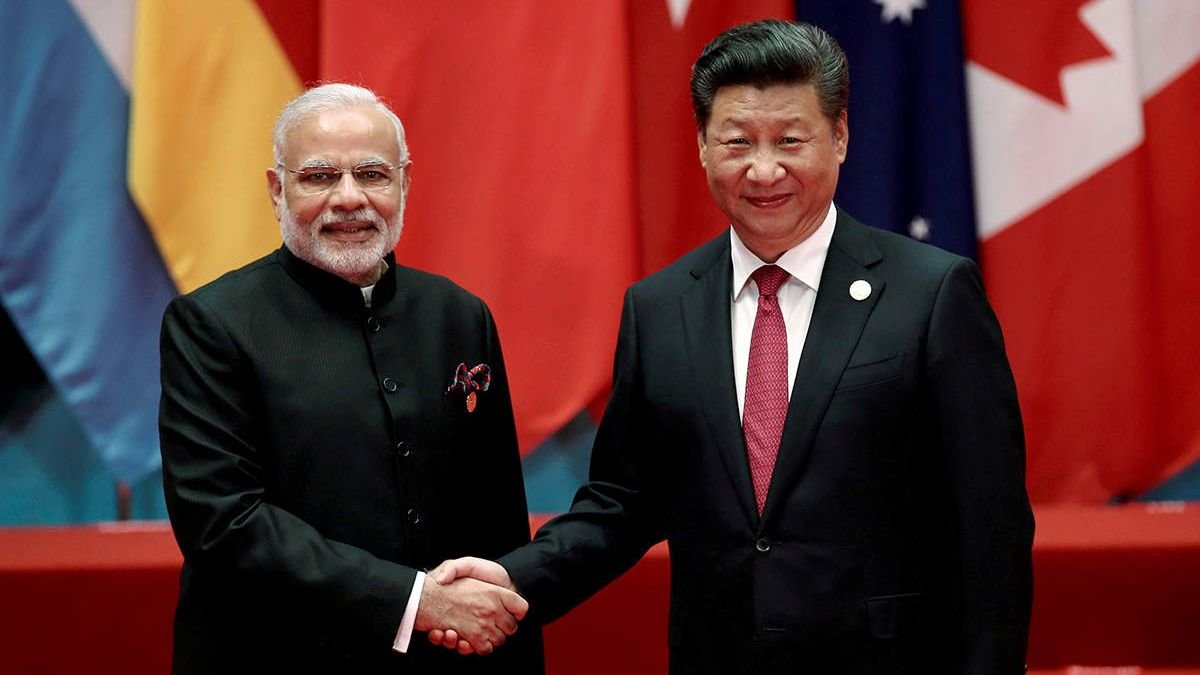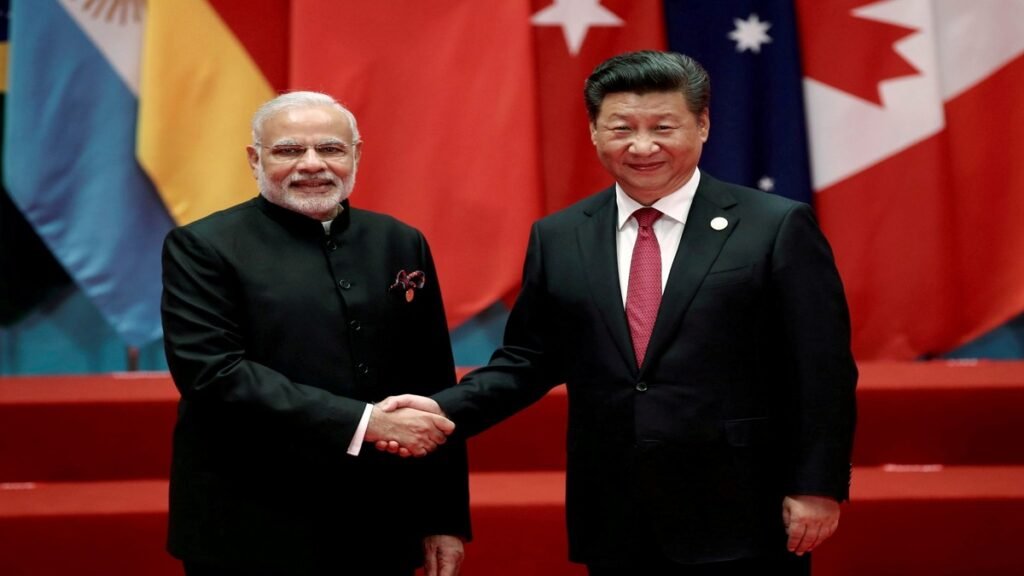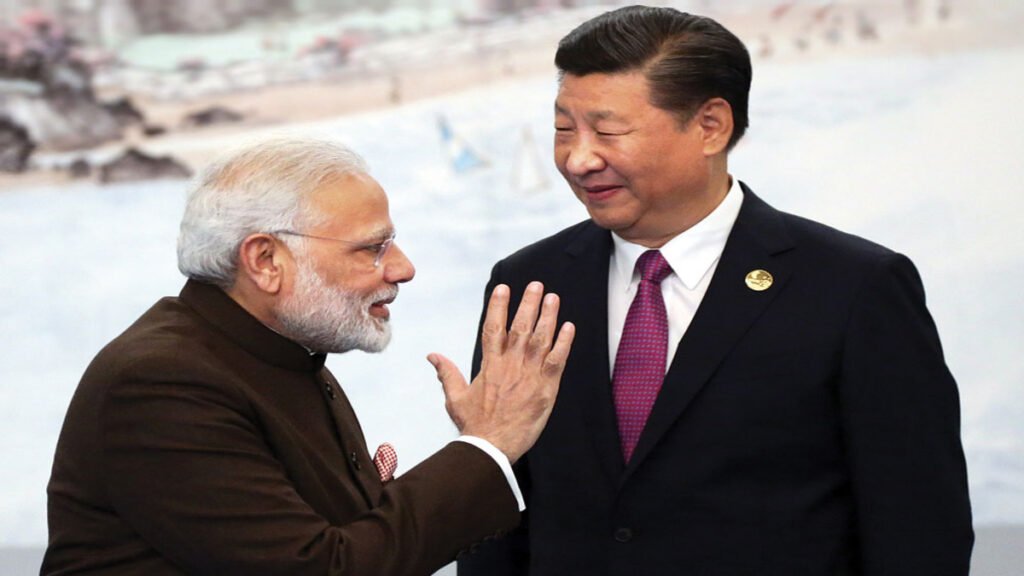
INDIA CHINA RELATIONSHIP AND EVOLUTION
India and China, two Asian giants with 1/3 of the world’s population and 50% of world growth, their cultural relations go back thousands of years. In the 2nd century BCE, the first records of contact between China and India were written, especially following the expedition of Zhang Qian to Central Asia. Buddhism spread from India to China during the 1st century CE. Trade relations between India and China via the Silk Road provided economic contact between the two regions during this time.
Tibet served as a buffer between India and China for thousands of years, maintaining geographical separation and peace between them. Only after China invaded and occupied Tibet in 1950 did the two countries share a border. Before that, there was no extensive mutual historical experience between the two nations and each country had no understanding of the other’s psyche and system. Before the mid-20th century, India-China relations were minimal and limited to some trade, exchange of pilgrims and scholars. As soon as India became independent (1947) and China was revolutionized (1949), interactions began. Chinese mistrust was sparked by Nehru’s views on supporting an independent Tibet. While accepting China’s sovereignty over Tibet, PM Nehru wanted Tibet to remain independent because Tibetan regard for India (where Buddhism originated) as their spiritual mentor and the holy land was a concern for China. Initially, China showed no concern for the McMohan Line (1914 Simla Convention signed between the British and Tibetan representatives), after that The Panchsheel treaty was signed by PM Nehru and Zhou on 29 April 1954 in recognition of Chinese rule in Tibet (Hindi-Chini Bhai-Bhai) as India acknowledged Chinese rule: Mutual respect for territorial integrity and sovereignty; Mutual non-aggression, Mutual non-interference; Equality, mutual benefit and Peaceful co-existence. After China tightened its grip on Tibet, India granted asylum to the Dalai Lama in 1959. after that In 1962, China’s People’s Liberation Army invaded India in Ladakh and across the McMahon Line in the then North-East Frontier Agency.

Also Read, Modi Vs Xi: From Chumar To Doklam Standoff
As a result of these events, relations between the two countries were frozen. Following some clashes at the Nathu La in Sikkim and Cho La, things started improving after the landmark visit of Prime Minister Rajiv Gandhi to China in 1988. Despite the fact that China never accepted India’s territorial integrity as a result of its expansionist policy, they are continuously creating unrest in Indian border regions while providing weapons and safe havens to local insurgents.During the cold war, when neither country was aligned with any power bloc, even at that time both countries did not share a common stage.
Due to this history of non-alignment between the Indian and Chinese sides, these countries have never developed a military and diplomatic understanding. Aside from this, economic growth is being followed by the rise of China, and Chinese leaders understand that India is the only country that can challenge their hegemony in Asia. In order to isolate India, they started using different economic and diplomatic tactics like debt traps, strings of pearls, and economic corridors. India has also taken steps to combat Chinese plans, such as necklace of diamonds, but there have always been tensions along the borders, from the standoff at Depsang in 2013, to the current standoff at the line of actual control and the Galwan valley clashes. In the past, as a result of all these hostilities, the two countries had never developed understanding at both a strategic and diplomatic level. In a parallel world, if India and China were able to speak on the same page and discuss issues, the world order would be different.

In 1980, when Dexiaoping became president of China, he said that if India and China had good relations, this century could be an Asian century. However, this never occurred because of Chinese actions against India. Having two Asian giants come together rather than fighting will be a nightmare for the west. There will always be a trust deficit between India and China because Indians have never been able to develop understanding due to aggressive policies and diplomatic challenges like militarisation of borders and growing threats to the regional stability we face from China.

But What If India and China were Friends?
A lot of western countries are developed in terms of economy and defense, and this is because they have sound relations with each other, which always complement each other. If India and China were friends like these, this century would become an Asian century of growth, and India and China would be unstoppable, which is the biggest nightmare of the western world. Since there are many areas where India and China can cooperate, as we have seen during the Russian war, the American government frozen russian US dollars and rendered them useless. This action is an alarming sign for the entire world as Americans have hegemony in the currency used in global trade.
In many countries, dedollarisation has been attempted at the individual level, but has not been as significant as needed. India and China have started trading in their local currencies to buy crude oil from the Gulf and Russia on an individual basis. But if China and India could come together to discuss dedollarisation, it would make a big difference. A concept of common currency has been proposed by BRICS , in which they will issue their common currency for BRICS countries, including India and China, which are some of the world’s biggest economies.
Also Read, De-Dollarization: Revolt Against The Mighty Dollar
This move can play a big role in the dedollarization movement if these two giants come to an agreement about not using the US dollar. India gets negligible support from china in case of terrorism in fact they sponsor and support pakistan’s terror organisations like providing them weapons and drones and even at the international stage china blocks india’s attempts to designate pakistani terrorists as UN designated terrorists. China’s “veto” on the matter should emphasize the extent to which Beijing is willing to publicly underwrite the Pakistani government’s approach to terrorism.

In addition to this, one of the biggest shortcomings India faces is no permanent representation in the UN security council, particularly since China obstructs India’s permanent representation in the UN security council. It’s surprising to see a country with 1.4 billion people not having proper representation on the world stage, but they don’t favor India getting a permanent seat. In the event of good relations between India and China, India would be better equipped to combat terrorism and hold a permanent seat on the UN Security Council, and the world would be more stable.
If India and China became friends, many of the resources they used against each other could be channeled towards the development of their people, such as investments in curbing unemployment, poverty and infrastructure development. This can ultimately increase the overall stability of the region in a broader perspective. The sound partnership between India and China will make the Indo-Pacific region much more stable and will have a profound impact on the relevance of QUAD and other alliances.
Also Read, Is An Asian Century Even Possible?
CONCLUSION
Our only option is to speculate about the imaginary situation of India and China as friends, but this has very little chance of happening if China somehow drops its ideology of expansionism and understands the philosophy of the west that good relations with adversaries are necessary for developing a prosperous nation. Thus, the dream of turning this century into an Asian century will be accomplished, and both Asia and the global south will be equally represented in the West-dominated world order.




